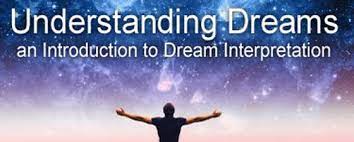
Dreams have fascinated humans for millennia, dreams interpretation serving as a gateway to the mysteries of our subconscious minds. The interpretation of dreams, or oneirology, involves analyzing the content and symbolism within dreams to uncover underlying thoughts, emotions, and psychological states. This article explores the fundamental aspects of dream interpretation, its historical evolution, contemporary methods, and practical applications.
Historical Overview
Dream interpretation dates back to ancient civilizations, with roots in Mesopotamia, Egypt, and Greece. In ancient Mesopotamia, dreams were considered messages from the gods. Egyptian dream interpreters were revered figures who held a significant role in understanding divine will through dreams. The Greeks, particularly through figures like Aristotle and Hippocrates, viewed dreams as a reflection of one’s physical and psychological health.
The Bible also references dream interpretation, highlighting its importance in various cultures. In the modern era, Sigmund Freud and Carl Jung significantly shaped contemporary understanding of dreams. Freud, in “The Interpretation of Dreams,” proposed that dreams are a manifestation of repressed desires and conflicts. Jung, on the other hand, introduced the concept of the collective unconscious, suggesting that dreams also contain universal archetypes shared across humanity.
Modern Approaches to Dream Interpretation
In contemporary psychology, dream interpretation blends traditional theories with scientific approaches. Modern practitioners often use a variety of methods to analyze dreams:
- Freudian Analysis: Freud’s method focuses on uncovering repressed desires and conflicts. Dreams are seen as a means of resolving these internal struggles. Analysts pay attention to symbols and themes within the dream to gain insight into the dreamer’s psyche.
- Jungian Analysis: Jungian interpretation explores the collective unconscious and archetypal symbols present in dreams. Jung believed that dreams provide valuable insights into personal growth and self-discovery by connecting with universal themes.
- Cognitive Theory: This approach examines dreams from a cognitive perspective, suggesting that they are a reflection of the brain’s problem-solving processes. Dreams are viewed as a way to process daily experiences and emotions.
- Neuroscientific Approach: Neuroscience explores the biological basis of dreams, examining brain activity during sleep. Studies have shown that dreams occur primarily during REM (rapid eye movement) sleep, and neural mechanisms may play a role in dream formation.
Symbolism and Themes
Dreams often contain symbolic imagery and recurring themes. Common symbols include flying, falling, or being chased, each of which can have various interpretations depending on the individual’s context. For instance, flying might symbolize freedom or ambition, while falling could represent feelings of insecurity or loss of control. Analyzing these symbols requires an understanding of the dreamer’s personal experiences and emotions.
Practical Applications
Dream interpretation can offer valuable insights into personal and psychological well-being. It can help individuals:
- Understand Emotional States: By analyzing dreams, individuals can gain a deeper understanding of their emotional responses and unresolved issues.
- Enhance Self-Awareness: Dreams can provide clues about personal desires, fears, and motivations, fostering greater self-awareness and personal growth.
- Improve Problem-Solving Skills: Cognitive and neuroscientific approaches suggest that dreams can aid in problem-solving by providing creative solutions to waking life challenges.
- Address Psychological Issues: In therapeutic settings, dream interpretation can be used to address psychological concerns, offering a non-invasive method for exploring subconscious thoughts and feelings.
Conclusion
Dream interpretation is a multifaceted field that bridges the realms of psychology, neuroscience, and personal introspection. From its ancient origins to modern scientific approaches, the study of dreams continues to captivate and enlighten those who seek to understand the hidden dimensions of the human mind. Whether viewed through the lens of Freudian analysis, Jungian symbolism, cognitive theory, or neuroscience, dreams remain a profound and enigmatic aspect of human experience, offering a window into the depths of our unconscious selves.
